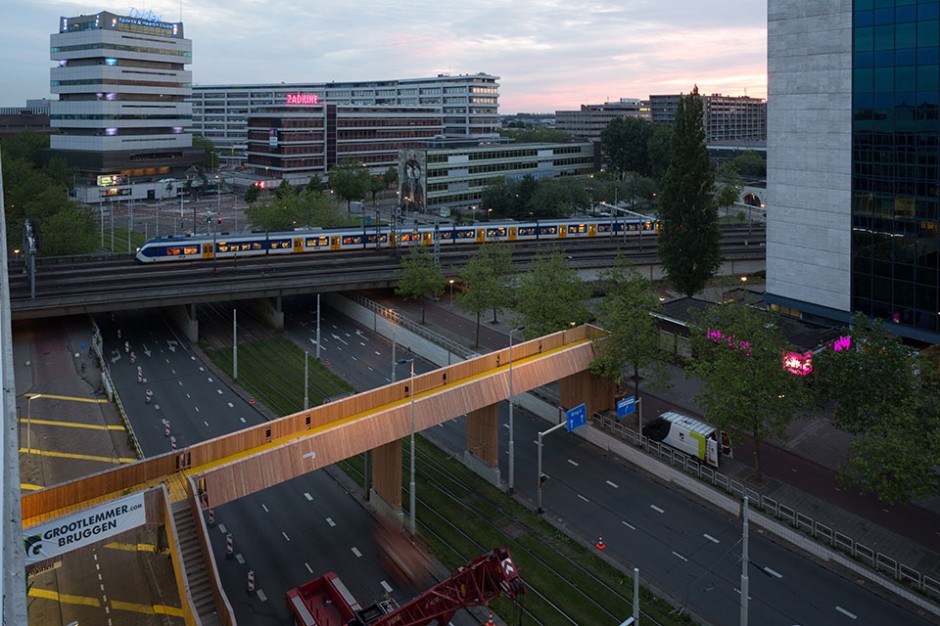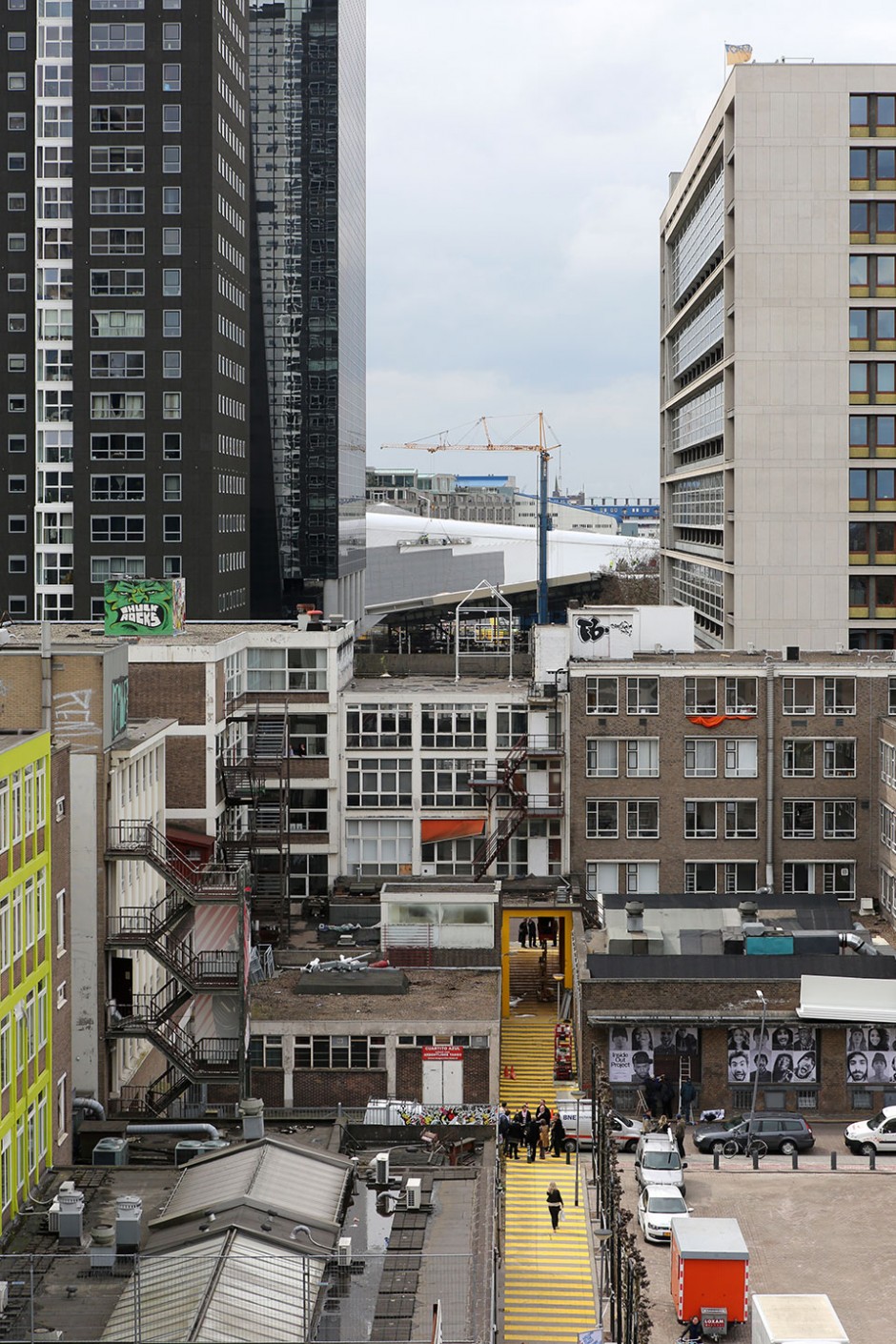 1
Issue 1
1
Issue 1
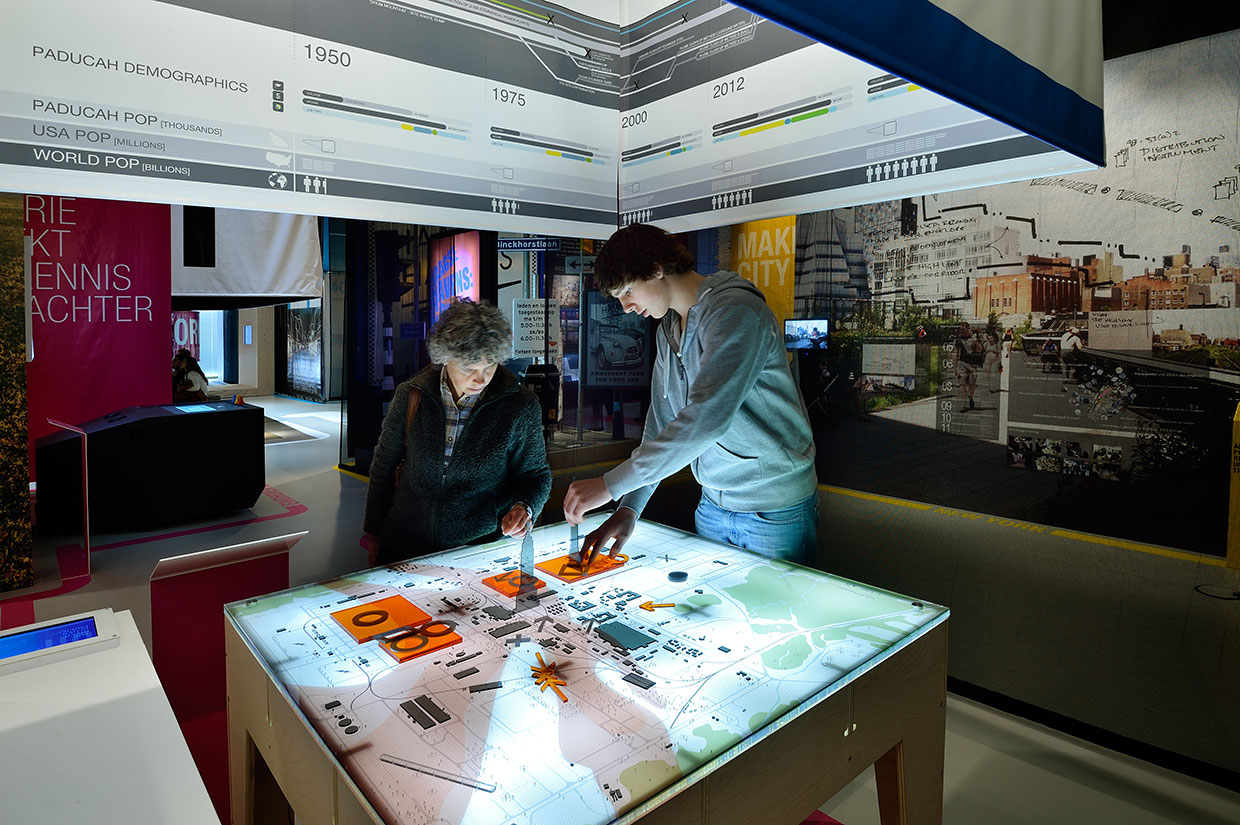
Image of the main exhibition of the 5th IABR, Making City at the Netherlands Architecture Institute (NAI). Photo: Ossip van Duivenbode
Making City: 5th International Architecture Biennale Rotterdam 2012
The rules of the game for making cities need reinvention. That was the message of the 5th International Architecture Biennale Rotterdam – Making City staged in 2012. The role of – and the relationship between – planning, design and politics can be redefined and thereby contribute to a more effective ‘urban toolbox’. Instead of relying on research alone, it connected findings and presentations to concrete urban design challenges in order to positively influence the quality of local design assignments in the Netherlands but also in Istanbul, São Paulo and many other urban cultures undergoing challenges.
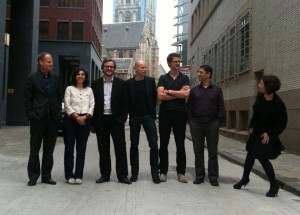
The 5th IABR curatorial team was chaired by George Brugmans (Director, IABR, left): Ihsan Bilgin (Bilgi University, Istanbul, Turkey), Joachim Declerck (Architecture Workroom Brussels, Belgium), Henk Ovink (Director of Spatial Planning, Ministry of VROM. the Netherlands), Kristian Koreman (ZUS,
Rotterdam), Fernando de Mello Franco (MMBB, São Paulo, Brazil), Elma van Boxel (ZUS, Rotterdam).
City making is on the edge of a paradigm shift, away from certain cherished clichés. But it needs a wider recognition of emerging response mechanisms to catalyse it. Because, wherever you go, there is a strong sense that how things used to be done, how processes were once conceived and followed, is often no longer of use in today’s climate.
Who does the responsibility for remaking the ‘how’ lie with? It lies with all the city’s stakeholders – administrators, policymakers, politicians, entrepreneurs, designers and citizens. However silos still abound, and the next step is to see how transformable they and tired systemic conventions can be. Fortunately, in many ways, awareness of alternative methods is rising, so motivation needs to catch fire more widely – and stay alight. That applies just as much in Europe, where cities are no longer growing, and will need to catch up after the crisis is over, as in growing global cities in thrall to the market, that need sustainable plans, but also a redesign of the complex processes they entail.
These are also the views of George Brugmans, founder of Rotterdam’s International Architecture Biennale (IABR). Making City, the latest, which opened in April 2012 and ran over the summer at the Netherlands Architecture Institute, as well as at the Schieblock and its vicinity in the centre of the city, ‘concludes a trilogy of biennales focused on the city of tomorrow’, he explains. Power, the 2007 edition, explored the combined forces of population growth and globalization fuelling urbanization. Open City (2009-10) asked architects and urban designers for their responses to these challenges in the form of actual projects. This time around, Making City’s message was: how can city makers do things in a more socially attentive way? How can new methods be given a greater recognition and priority? How easily can new adaptations and alliances be tested? Why this focus? ‘Austerity calls for new alliances and doing things differently’, says Brugmans. ‘How can making city be about reinventing the economy?’
One of the greatest barriers to the effective functioning of a more responsive form of alliance is the way governments normally plan, explain Brugmans and co-curators Joachim Declerck, Director of the Architecture Workroom, Brussels, a think-and-do tank for innovation in architecture and urban planning and Henk Ovink, IABR’s governmental collaborator, the Director of National Spatial Planning, Dutch Ministry of Infrastructure and the Environment, in their exhibition catalogue essay. ‘We need an activist government that participates, to bridge the gap between formal policy and informal collaboration’, Brugmans stated at the opening. But how can people themselves overturn the mental barriers that perpetuate genericism in the management of processes, which in turn revolve around an increasingly discredited generic system of rules? Lacking credibility, because they are ill-attuned to the reality of situational challenges and emerging alliances.
This intangible reality has created a tangible stranglehold, different from culture to culture, and circumstance to circumstance, so IABR has unearthed international evidence of changing tactics through different alliances, drawing on findings and documentation from a number of categories of ongoing urban projects, rather than throwing its net so wide the visitor gets lost. Firstly, Test Site activities – IABR’s long-standing research and collaboration with other global bodies. With the input of Fernando de Mello Franco, Director of MMBB Architects in São Paulo and Asu Aksoy, an academic from Bilgi University in Istanbul, it has been working with the Social Housing Department of São Paulo, the Municipality of Arnavutköy in Istanbul, identifying productive social networks and models, two key Dutch global outreach projects of our time. This is an ongoing initiative: for example, a more elaborate version of plans and design proposals for pilot projects in Istanbul forms the core of Making City Istanbul at Istanbul Modern (to 13 December 2012), as part of Musibet, one of the two main exhibitions of the Istanbul Design Biennial curated by architect Emre Arolat.
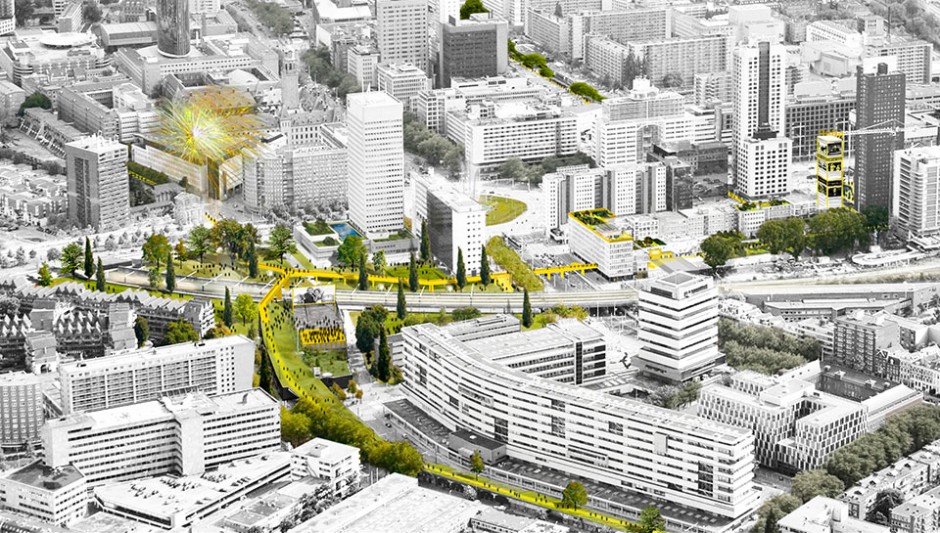
Rendering of the course of the Luchtsingel by day – pedestrian bridge on Test Site Rotterdam. Photo: ZUS
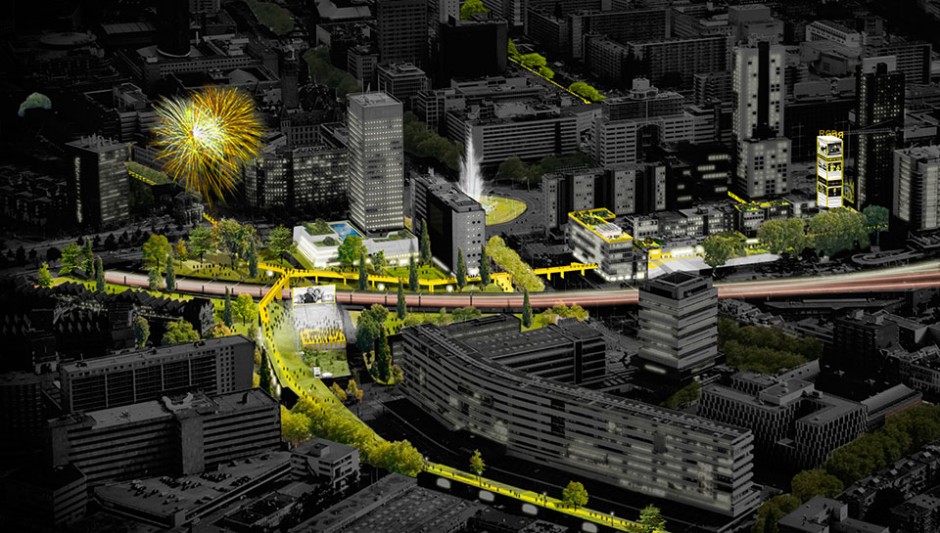
Rendering of the course of the Luchtsingel by night – pedestrian bridge on Test Site Rotterdam. Photo: ZUS
At home, the Dutch architectural practice ZUS (Zones Urbaines Sensibles) were commissioned to transform the rationalist hangover that is Rotterdam Central District (RCD). The city has over 7 million empty buildings, largely here, blocking new functions, and I/We/You Make Rotterdam, an exhibition-cum-platform at the district’s Schieblock promoted the Test Site’s experimentation with building reuse, boosting local initiatives and crowdfunding. ZUS’s 18 varied interventions adapted car parks and the old Post Office building for workshops, festivals. From the planted roof across this site the structures of the rationalist city looked ripe for reinvention. Pragmatically, the Test Site involved alternative financing strategies developed by Erasmus and Delft Universities.
Once cut off from the Central Station by the city’s wide boulevard, the district is now connected by a new wooden bridge (individuals could sponsor a plank and have their name on it), part of a planned high level pedestrian network around the district. The Dutch broadcasting station VPRO, which made a newspaper about the Biennale, dubbed ZUS’s initiative ‘therapy for the centre’. IABR arranged multiple guided walking and cycle tours here, but in case anyone got the impression it was just about the centre, they also flagged up the anti-fragmenting effects of further flung neighbourhoods through new collaborative transport networks like Zet Net and Zuidpool (southern Rotterdam).
To leaven the mix of ingredients in the NAi exhibition, through Ovink’s initiative, the curators lined up stories about even Dutch national spatial ‘Atelier Making Projects’ – all characterized by their considerable size, level of complexity and extensive duration, some over decades, which relying on the involvement of countless stakeholders from the market and from civil society in alliance with the state.
Putting the tales of local contexts and other IABR Test Sites in a global perspective, these were interspersed with stories about 23 CounterSites, notably schemes ranging the adaptive plans by the public space managers EPADESA for La Défense on the west side of Paris, a network of ten Kentucky cities along the Ohio River fighting the impact of record unemployment, whose various local bodies the University of Kentucky College of Design is in partnership with, forging strategic and scenario planning initiatives, and Guatemala’s Posconflicto Laboratory, designed to guarantee housing access to all through a cross subsidy model.
For the thirsty, there was a lot to be learned: the curators offered a total of 33 puzzle pieces distributed in three solemnly named clusters: Economy, Ecology and Demographics in which you could explore a host of narratives, how Business Districts can be better linked to the city avoiding fragmentation of surrounding areas, new approaches to transforming the existing city, including ways of building on or rescuing economic dynamism and responses to migration and poverty. Ecology tackled future-proofing coastal areas, how to juggle urban expansion while protecting natural supply channels. Achieving cross-municipality and city collaboration included the Making Olympic Cities project, the Netherlands’ strategy to harness the energies of the network of cities and towns in the Randstad, while population explosion means making best use of nodes in networks for housing as well.
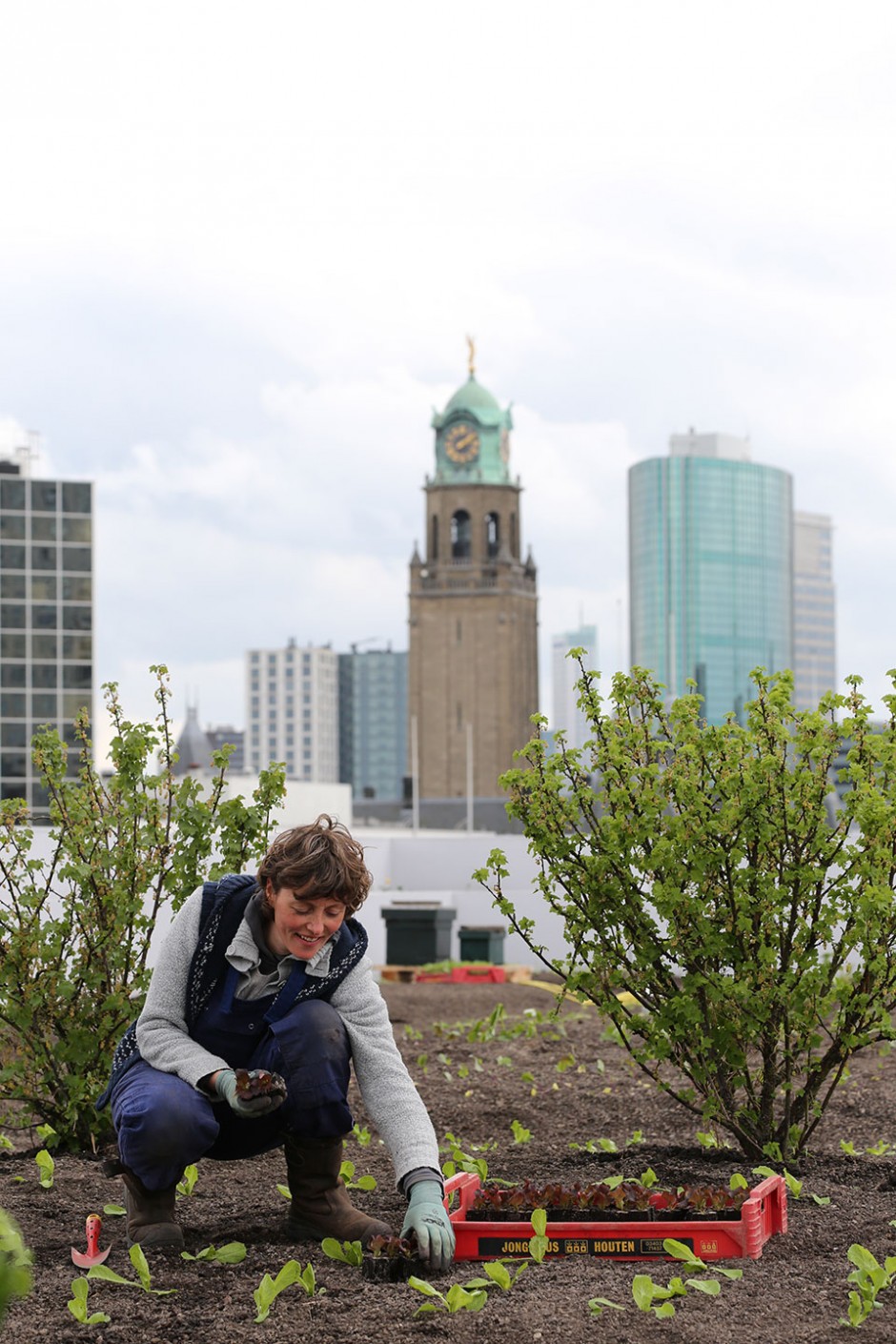
Rooftop garden on top of the Schieblock. With the help of rooftop farmer Annelies Kuipers, fruit and vegetables will grow here, and bees will buzz around their hives. Photo: Ossip van Duivenbode
An exhibition is not a book. With its didactic aim, IABR’s DNA must always be to edutain. With multifaceted material, it could easily have become a bran tub in which drawing out any sense of the processes, and the lessons, became an exhausting task. Inevitably a number of displays had layers of documents to study, if you so cared, which is useful, but the curators’ differentiated displays designed by Kosmann de Jong prevented the buried narrative effect. Given the generative nature of the theme, the video clips, especially the ones with a cartoon-style format, for example, about the Presidential aspirations for La Defénse, the pilot projects afoot strategizing with infrastructure data for Flanders’ housing without more ribbon towns, and the organic growth aspired to by MVRDV and the municipality of Almere’s plans to transition from Almere 1.0 to a bigger, deregulated 2.0, provided an excellent selection for the layperson as well as the army of professionals visiting the exhibition.
IABR’s chosen projects are complex multi-modal scenarios. So video’s capacity to communicate the shared goals through hyperlinked relational digital design approaches being evolved by architects offered vital critical tools for making city in the 21st century to the wider public, hopefully something IABR will show more of in future. Making Almere, an exhibition running simultaneously in the CityMall in Almere to the east of Amsterdam (to the end of 2012), explains how the city is pioneering bottom-up planning, and invited visitors to input their own thoughts and ideas, using the augmented reality app UAR to learn about recent and future initiatives in the city.
Upstairs at NAi was an engaging family of 23 projects from global architectural schools investigating the kaleidoscopic possibilities for Smart Cities sensibly distanced from the technocratic. So what is the smart city? While Harvard GSD Delta City devised new landscape typologies changing land ownership patterns, Virginia University’s MessyTech proposal for the LA CleanTech Corridor competition explored the reality that the full lifecycles entailed in ‘clean’ industries are messy. Smart, because a messy approach is all the stronger for embracing the inherent dynamics of existing urban fabric. Mergers of many kinds are hugely smart, for example, blurring the boundaries between architecture and infrastructure. Leveraging is smart, and a common emerging goal is for neighbourhoods to leverage the layers of the city’s ecosystems in order to negotiate their own ecologies and connectivity (the Brazilian-US Heliópolis scheme), especially when all retail activity is online and real estate is empty space (Zuyd University, Maastricht).
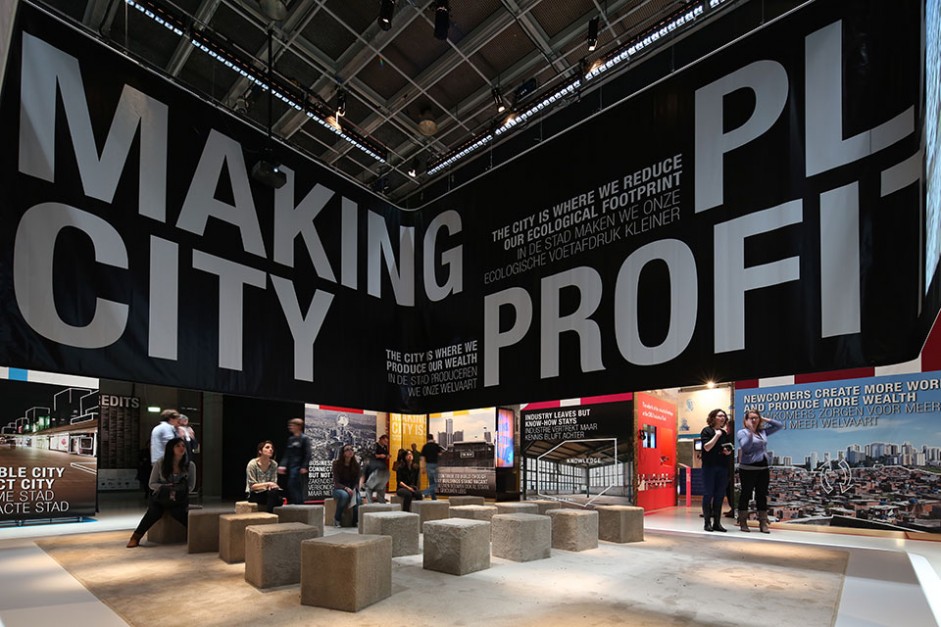
Image of the main exhibition of the 5th IABR, Making City at the Netherlands Architecture Institute (NAI). Photo: Ossip van Duivenbode
“Even when the crisis finally abates, European cities, in particular, will be tried and tested over and over, so all the more reason to be in possession of daring, yet tried and tested, strategies for change”
In the Making City exhibition, the most ambitious bottom-up, citizens-as-fellow-leveragers strategies included Studio Makkink & Bey design’s sustainable public utilities to help advance food production cycles in neighbourhoods like Erasmusveld in the Hague. However, deciphering the ‘how’ of the leveraging in every project display was not always easy, understandably so when it is a long story. Rotterdam City Council’s process of investigating the blueprint – existing planning methods – in order to set up greenprints – new structures and alliances deserved greater focus, while it was the synergistic projects from the developing world – like Guatemala, steeped in ethics of the generation of social justice, that most inspired.
There was also a chorus. Wouter Vanstiphout, Chair of Design as Politics at Delft and Michelle Provoost, co-founders of Crimson made an exhibition reacting to the IABR this year, which they maintain ‘assumes alliances and coalitions’ (ie. of a certain kind), when Design as Politics, housed in a Mini Mall on Rotterdam’s Test Site shows ‘why design becomes political, whether architects want it or not’, says Vanstiphout. An array of cutouts depicted riot-torn cities, for example in the UK in the 1980s. Dreams of welfare state are crumbling, and pop cultures are the seismographs of the city. Dutch squatter riots evoke cities as very contested places, game boards of competition, territories in which banks force a decrease in the value of real estate.
Drama comes with the territory, and there was positive catharsis in the third and final section. Here, the Face Off teaching studios the duo set up at Delft, which placed Detroit in comparison with Rotterdam on vacancy and devaluation, São Paulo against Amsterdam on urban infrastructure and Istanbul and the Randstad, on sprawl. This confrontation opens up unexpected possibilities and instruments. What if people dealt with Dutch problems in a Brazilian way, Turkish problems in a Dutch way, rather than staying with the ‘faux optimism of city marketing’, they argue, so devaluation of vacant real estate is seen as the stepping stone to revive city centres? Playing the city, not planning, using design as a political tool, is not about imagining unheard of depths of equality, but about a wider sense of citizen representation. Another ‘how’ – or more of a ‘howzat!’ to the Making City’s curators.
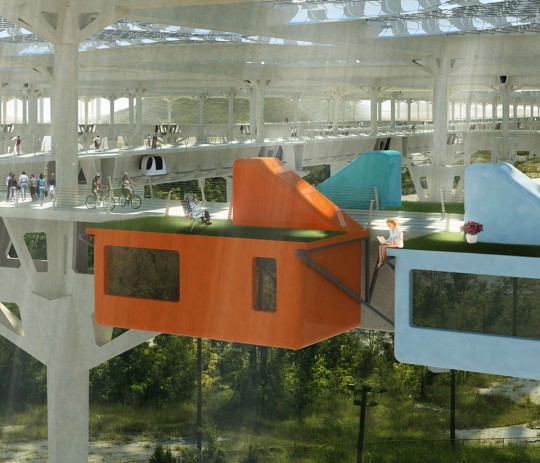
Tar Creek Supergrid is a project by students at the Department of Architecture, Toronto University to make a floating city over the polluted soil of an old mining landscape in Oklahoma. Part of the exhibition Smart Cities, Parallel Cases 2, at the NAI, Rotterdam. Photo: Amy Norris and Clint Langevin.
MakingDouala
Down the road in Rotterdam at the RiverClub Gallery, Making Douala 2007-2013 showed how in different neighbourhoods of the largest of Cameroon’s cities the act of making public art projects – art works and events by Salon Urbain de Douala (SUD) involving locals and their neighbourhood organizations is affirming a new sense of publicness not found in many African cities.
This was a classic IABR, as compelling as Adriaan Geuze’s Flood IABR some years ago, with its sea of beautifully reconstructed and cleverly sourced models of water-threatened cities through time. Advocates for compact inner cities against far-flung, less sustainable suburbs, for which they argue for sustainability through a cohesion in diversity of housing types, IABR’s curators are also in favour of post-suburban, compact productive landscaping schemes. They showed Cluster Paris- Saclay, the last major agricultural plateau 30 minutes from the centre, designed by landscape architects Michel Desvigne Paysagiste, a French Ministry of Urban Affairs project, a story of ‘how’ that is bound to get more focus in the next IABR, Urban by Nature, to be held in 2014, which will be curated by Dirk Sijmons, the landscape architecture and former Government Advisor, with a focus on the need to research solutions for cities in terms of their metabolism.
All these jostling ambitions needed a vivid exhibition landscape, helped not just by a real test site down the road, but in the NAi by viewing platforms and seats, and varieties in scale. The giant 900km Nile City, a territory growing by gemmation, did not actually grow, but contrasted well with the minutiae of jumping the systems detailed elsewhere. IABR’s is a much broader than the usual vision of urban design, and hugely welcome right now as a prospective, speculative vehicle. Even when the crisis finally abates, European cities, in particular, will be tried and tested over and over, so all the more reason to be in possession of daring, yet tried and tested, strategies for change. Sharing strategies is not the same as ending up with duplicated results; the smart city demands the thinking through of processes and application of collective intelligence in differentiated formats. Messy-smart, locally driven (with some help from the Dutch and their appetites for testing) is how it is!
